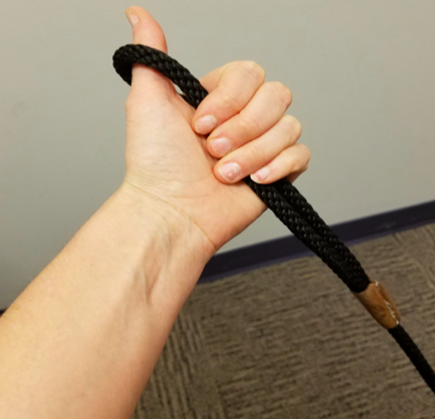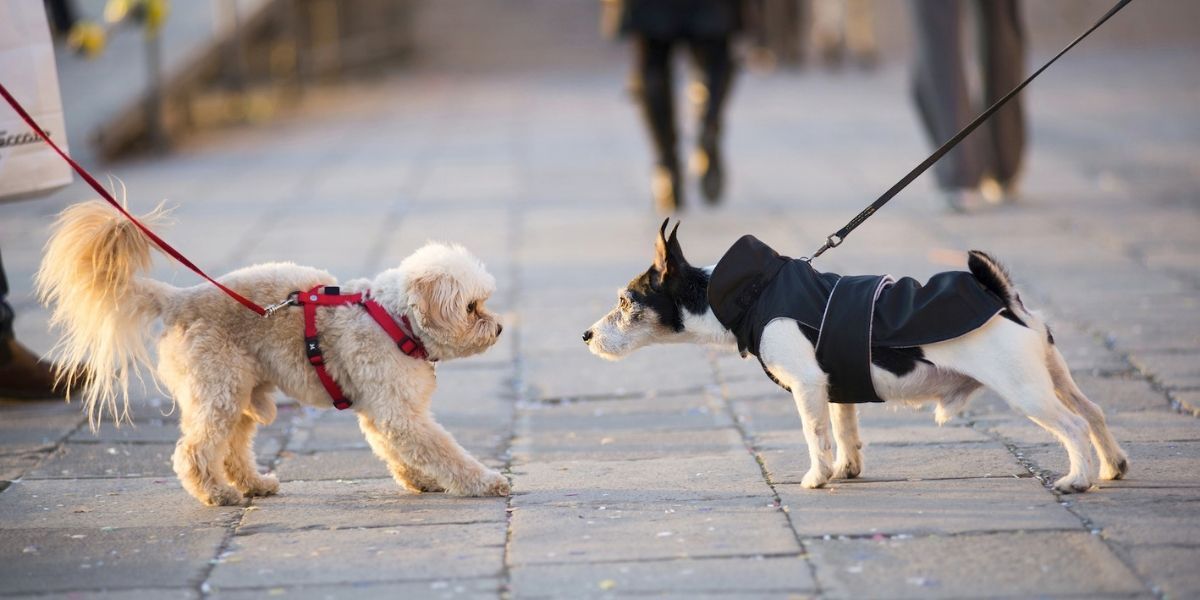There is unspoken pressure for all dogs to get along in many different environments such as on leash greeting, dog parks, daycares, breweries….the list goes on! Not all people get along so I am not sure why we would expect that of our dogs?!
Many dog owners want their dog to meet other dogs while walking on leash. There are some risks involved in doing so. For example:
- The other dog could be sick with a contagious disease such as upper respiratory infection.
- The meet and greet with leashes can be clumsy and awkward for everyone involved. The leash tension and tangling of leashes can turn the greeting into a stressful situation for everyone, especially our dogs!
- You do not know the other dog’s behavior and social history with other dogs; therefore, you run the risk of your dog having a negative experience.
- If your dog is unsure about other dogs and tends to growl or snap to communicate he needs space, I would avoid leash greetings to prevent unwanted behaviors from your dog. You want to avoid situations where your dog is rehearsing these behaviors. And let’s face it, if your dog is growling and snapping at other dogs, then he might not want to meet another dog in general. So respect that choice.
If you choose to introduce your dog to other dogs while on leash here are a few questions to ask yourself:
- Does your dog enjoy meeting other dogs?
- How do you know that?
- What about his body language indicates that he or she is excited to meet other dogs?
5 Tools to Create Successful On Leash Greetings
1. Observe Both Dogs
It’s really important to pay attention to both your dog and the other dog’s body language during these situations. I have been on walks where people ask me if their dog can meet Sully while I am observing their dog engage in avoidance and coping behaviors indicating to me that their dog is not interested in meeting my dog. To prevent a negative outcome, I politely say, “Sorry, he’s in training” and I continue on my walk.
Not all greetings and social experiences are created equal. Just because your dog greeted another dog politely on the walk yesterday does not mean he will react the same way to a different dog the next day. Pay attention to your dog’s triggers and emotional threshold before doing a meet and greet.
2. Ask Permission
More dogs than you think don’t enjoy meeting other dogs in general, let alone confined by a leash. Ask the owner if it would be appropriate to do a greeting before assuming it is okay.
3. Hold the Leash Correctly
You want to make sure your leash is looped around your thumb and the rest of your fingers wrap around the leash handle. See the image below. You want to avoid wrapping the leash around your hand multiple times to prevent injury to your hand if your dog is strong or suddenly pulls on the leash.
You want to also make sure the leash is very loose during the visit. The leash should look like the letter “J” when the dogs are greeting. When the leash is tight, dogs are more likely to get tense during an interaction since they feel somewhat restrained and without choice. With that said, it’s not always possible to keep the leash loose the whole interaction. For example, if your dog pulls you toward the other dog the leash will likely be taught. However, once you get close enough to the other dog, make sure to loosen the leash as best you can.

4. Keep Movin’
Doing a proper leash greeting, keeping the leashes slacked almost looks like a salsa dance! It’s best for the handler to keep moving as the dog moves. This helps to keep the leash loose and untangled from the other dog’s leash. This step may feel funny since not all dog owners know to do this!
5. Short and sweet
Since some greetings can be tense due to their abrupt nature, possible tension on the leash or lack of social skills in one or both dogs, it’s important to keep these interactions short and sweet before it has the opportunity to escalate. I usually say count to 3 and then say “Let’s Go” and continue your dog down the street. As you leave and your dog follows, either offer praise or treats for following you.

